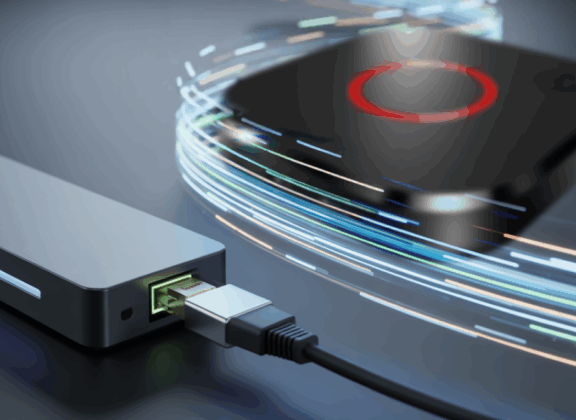The Role of USB-Ethernet in IPTV Streaming
IPTV relies on a continuous and stable data stream, particularly when it comes to live television and high-resolution channels. Wi-Fi, even under favorable conditions, is prone to interference, variable speeds, and occasional drops. Such interruptions can result in buffering or degraded video quality. A wired Ethernet connection, established through a USB adapter, minimizes these risks by providing consistency and stability. For users whose IPTV set-top boxes lack built-in Ethernet ports, USB-to-Ethernet adapters are often the only way to achieve reliable wired connectivity.
Importance of Chipset Support
The effectiveness of any USB-to-Ethernet adapter depends heavily on the chipset it uses and whether the IPTV device’s firmware supports it. Android-based IPTV boxes in particular recognize only a limited range of chipsets. Among the most widely supported are the Realtek RTL8152 and RTL8153, as well as the ASIX AX88179. Opting for an adapter with one of these chipsets drastically reduces compatibility risks. Low-cost adapters with unknown or generic chipsets may not work at all, leaving the device unable to establish a network link. For this reason, choosing a proven chipset is far more critical than simply looking at price tags or advertised specifications.
USB Versions and Their Performance Impact
The USB interface version on the IPTV device plays a direct role in determining the achievable speed. Devices equipped with only USB 2.0 ports are limited to a theoretical maximum of 480 Mbps. In practical usage, this typically translates to 200–250 Mbps, which is more than enough for IPTV, even at 4K resolutions where streams rarely exceed 40 Mbps. However, IPTV boxes featuring USB 3.0 ports can take advantage of gigabit Ethernet adapters. With compatible chipsets, these can approach 900 Mbps in real-world scenarios, providing extra bandwidth for multitasking and offering some measure of future-proofing.
Practical Speeds in Real Use
While manufacturers often highlight theoretical maximums, real-world results are the true measure of an adapter’s performance. For USB 2.0 adapters, users can expect stable throughput in the range of 80–200 Mbps. This is sufficient for smooth Full HD playback and most 4K streams. USB 3.0 gigabit adapters typically deliver between 600–900 Mbps under favorable conditions, ensuring rapid buffering and supporting multiple streams or simultaneous downloads. The crucial point is that even the lower end of these real-world numbers is entirely adequate for IPTV streaming.
Setup and Everyday Use
For most IPTV set-top boxes, using a USB-to-Ethernet adapter is straightforward. The adapter plugs into the USB port, connects to the router with a standard network cable, and is usually recognized automatically if the chipset is supported. In some cases, users may need to adjust system settings to prioritize Ethernet over Wi-Fi, but once configured, the benefits are immediate. Users generally report fewer interruptions, faster response times, and improved quality, especially during peak network usage hours or in environments where Wi-Fi interference is unavoidable.
Evaluating Budget vs. Premium Choices
The market offers both affordable and premium USB-to-Ethernet adapters. While budget options may seem appealing, they often compromise on build quality, thermal stability, and overall reliability. Such devices may lose connection under heavy load or fail to deliver promised speeds. Premium adapters, particularly from established brands, not only guarantee compatibility with common IPTV firmware but also provide consistent performance over time. Investing in a higher-quality model can significantly reduce the likelihood of frustrating interruptions during streaming sessions.
For IPTV set-top boxes without RJ-45 Ethernet ports, USB-to-Ethernet adapters serve as a vital tool to ensure smooth and reliable streaming. Choosing the right chipset ensures compatibility, while selecting between USB 2.0 and USB 3.0 versions determines the available bandwidth and level of future readiness. Actual performance, though lower than theoretical specifications, consistently meets or exceeds the requirements for stable IPTV playback. By selecting a dependable adapter, users can eliminate Wi-Fi instability and fully unlock the potential of their IPTV set-top boxes.
